The magic of ‘Mixed Media’ comes from an artist’s ability to merge distinct elements and techniques into a cohesive work. These artistic ‘mash-ups’ of diverse materials and processes lead to visual treats that can both surprise and reward viewers.
‘Wait…is that thread on paper?’ ‘Look! There are multiple layers when you look up close!’ ‘How did she do that?’
Portuguese mixed media artist Mónica Leitão Mota is a master at combining multiple elements into single works of art. One piece alone could feature four or more artistic approaches, yet she seamlessly pulls them all together.
Mónica is now generously sharing an inside look into many of her techniques, including how she manipulates images on a computer, embosses, paints, screen prints, and employs free-motion stitching. (We think you’ll be surprised to hear how she’s turning free-motion stitching a bit on its head.)
She also describes how her Portuguese heritage and heirloom treasures inform her work in touching ways. Her story goes beyond a basic travelogue to express a bittersweet love and longing for one’s homeland.
Mónica studied Sculpture at the University of Fine Arts of Porto in Portugal. She currently resides in London, Ontario, Canada, where her work has been featured in multiple exhibitions. Her work has also been featured across a number of publications. And she is a member of Craft Ontario in Canada and the Society for Embroidered Work in the UK.
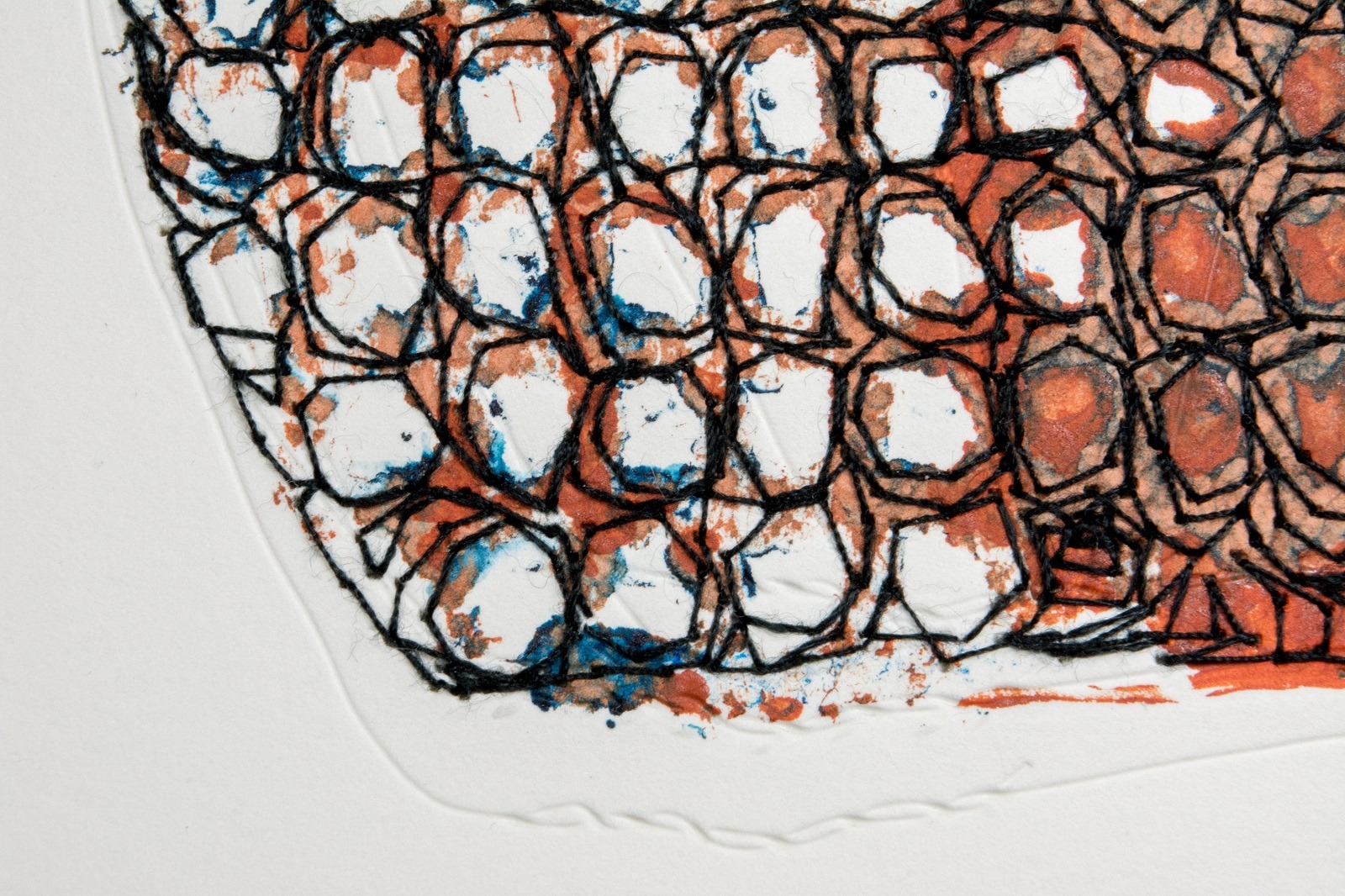
Heirloom fabrics set the stage
TextileArtist.org: What initially attracted you to textiles as a medium? How was your imagination captured?
Mónica Leitão Mota: I was always interested and attracted to my maternal grandmother’s old sewing machine in her living room behind her favourite chair. Understanding the machine’s mechanism, its ability to make textured lines on top of other textures (such as cotton or wool), and the fact I could touch and feel all those textured layers are childhood memories.
I also think my attraction for textiles started when I realized that over a period of years, I had a growing fabric collection of different origins, patterns, and textures. It featured tablecloths, kitchen towels and lace cloths in vintage cotton and linen that were part of my Portuguese heritage. I also had pieces of clothing set aside because I liked the fabrics.
The contrast among the different generations of fabrics and textures was the basis of my initial inspiration. And the desire to draw over those layers of fabrics encouraged me to buy a sewing machine and learn free-motion machine stitching techniques.
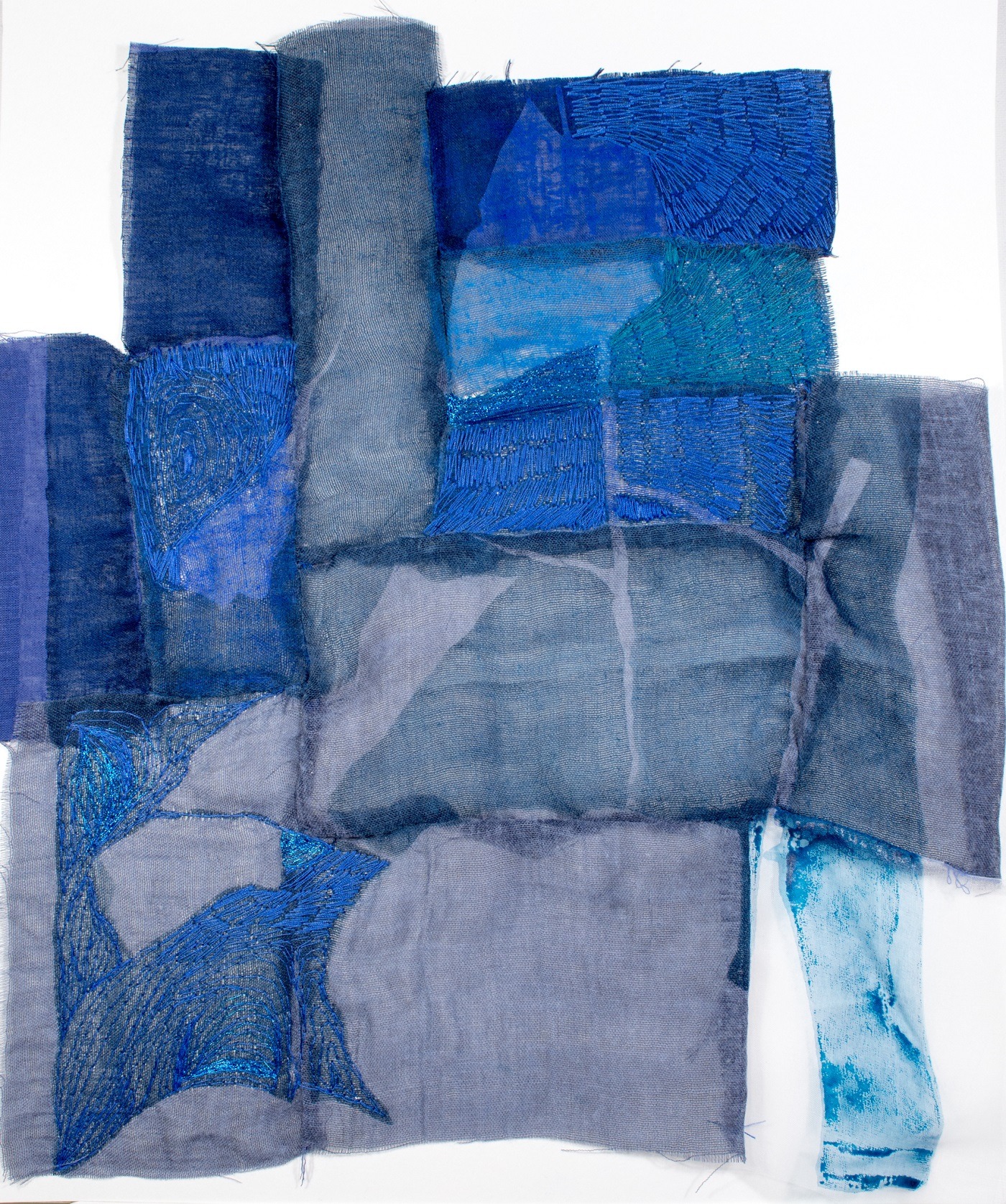
What or who were your early influences and how has your life/upbringing influenced your work?
I took artistic courses since my high school days, and after that, I studied Sculpture at the University of Fine Arts of Porto in Portugal. The textures of the different materials I worked with and the drawing classes in which the use of line was extremely important definitely had an impact. The light and brightness of the classroom pavilions contrasting with the walls’ shadows also was remarkable.
For the next 10 years, I was a teacher of Visual Arts and Descriptive Geometry at different schools in Portugal. Sculpture took a secondary role in my life, and the rationale of teaching Geometry mixed with exploring artistic creativity developed the characteristics and traits reflected in my current work.
Moving with my family to Canada in 2005 motivated and inspired me to start exploring and artistically developing contrasts between two different life experiences and cultures. All the textile memories (physical, sensory and emotional) I carried with me over the years were suddenly asking to be explored. Using my fabric collection as a means of expression was something obvious and urgent for me. So, I started to develop the creative process I use today.
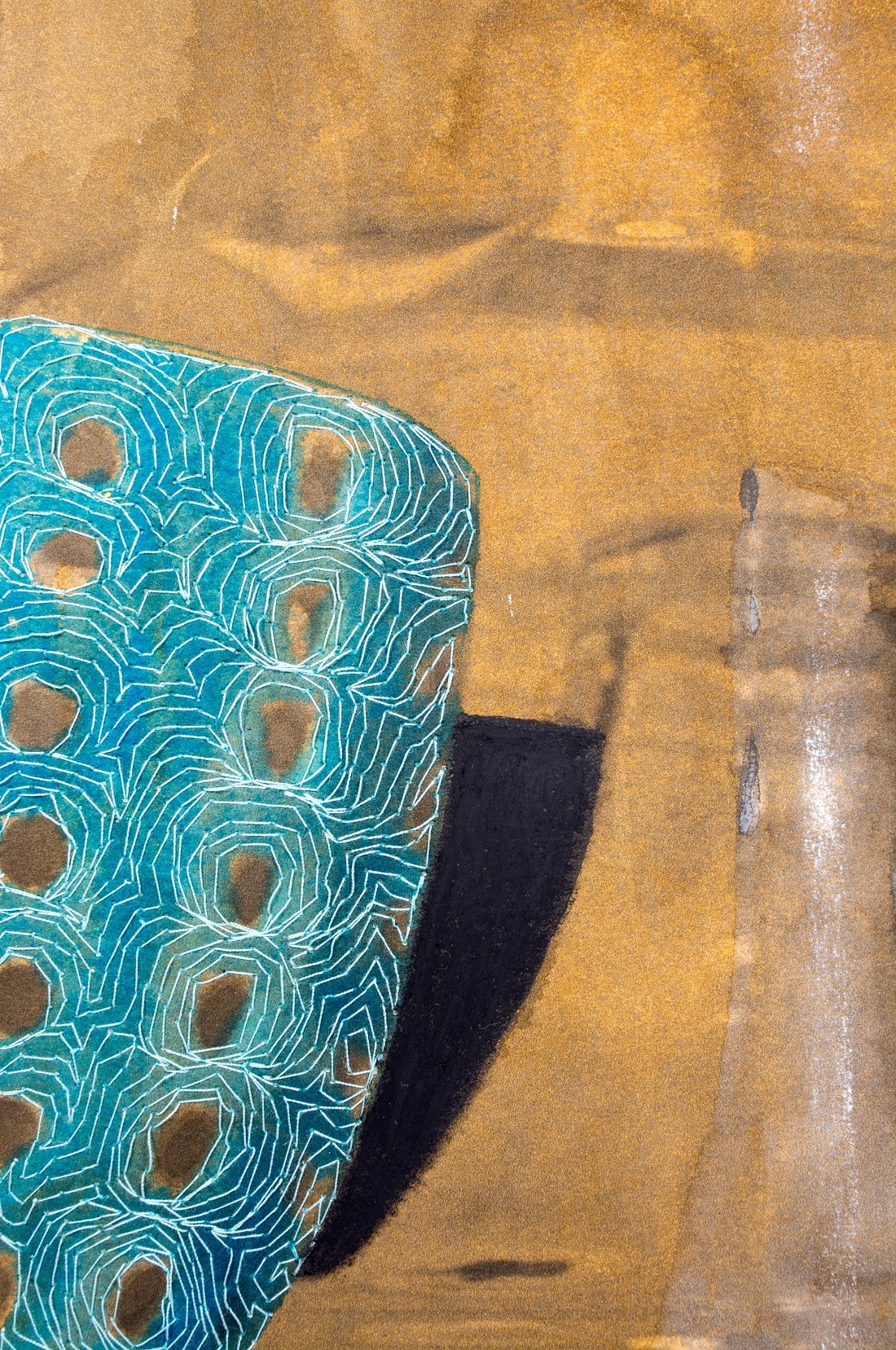
What was your route to becoming an artist?
All of the above, including adapting to a new and very different country, has all contributed to my evolution as an artist. Not being an artist — not creating or not thinking artistically — is something I cannot even conceive.
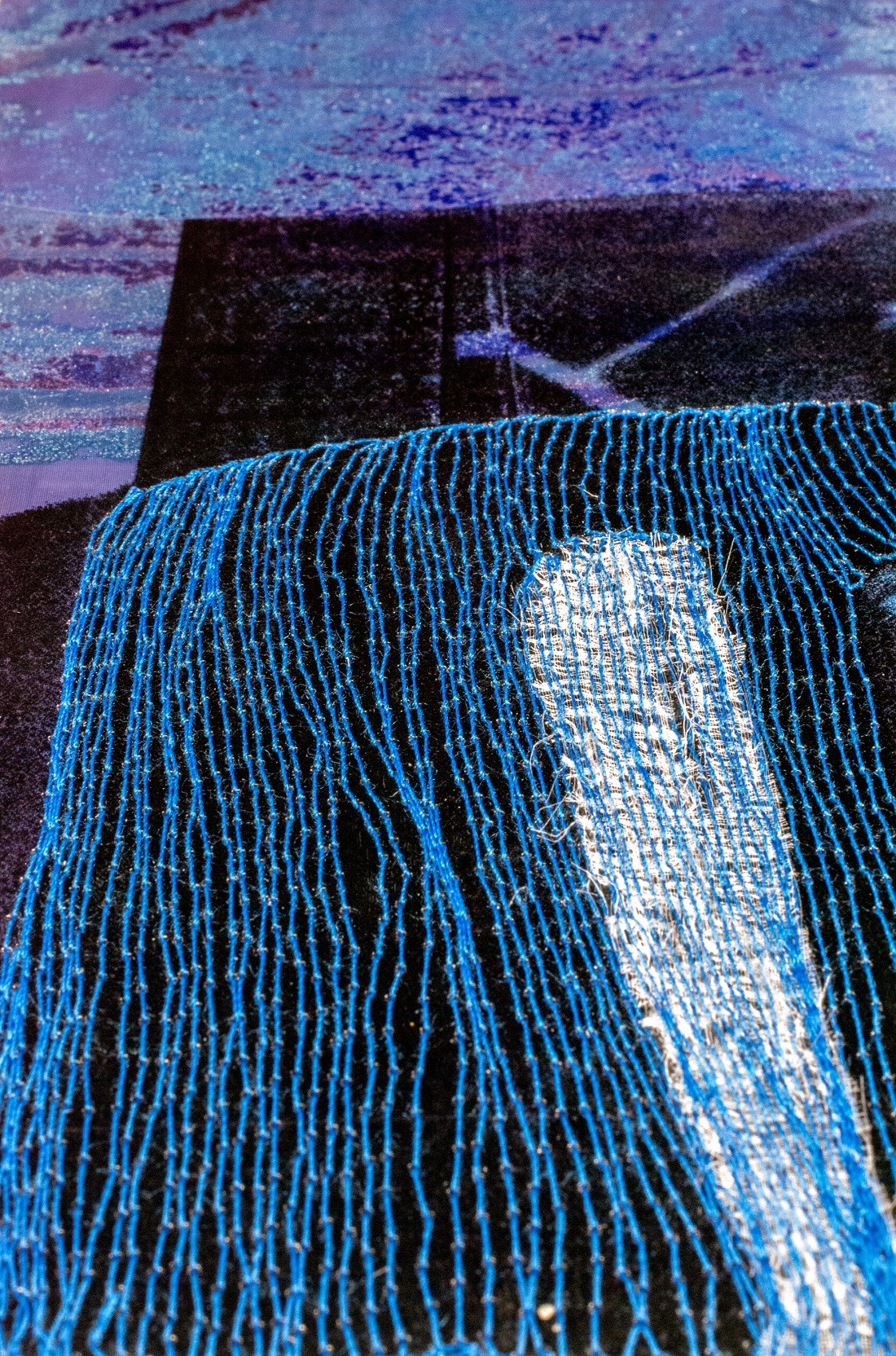
A menagerie of techniques
Tell us about your process from conception to creation
I usually start my creative process with a photograph or series of photographs that have a common theme. I enjoy editing the photos on my computer using Photoshop Elements. Uploading the photos and being able to see them on another scale on a monitor is like having a “third eye” that always gives me pleasure and excitement.
Photography has always interested me. My computer is full of photos taken over the years: family photos, landscapes, travel, and details that catch my attention. More recently I have collected photos of objects collected over time that are part of my Portuguese heritage and beyond.
I have experimented with several cameras, from a vintage camera that belonged to my mother to several digital ones. I love to explore the possibilities of alteration, distortion, or image manipulation that Photoshop gives me, and that usually orients me when I decide to start a new work.
For me, working with Photoshop is a way of creating an initial sketchbook made of digital and altered photos of the object or theme that interests me at the time. I upload the raw files from my camera to my computer, then choose two or three of those photos and mainly start playing with contrast, shadows, and blacks and whites.
At first, when I discovered Photoshop, I found the many capabilities and small editing tools inside other editing tools were acting as elements of dispersion and distraction from my work. It took me a while (some years of trial and error and lots of wasted white pages) to understand and be able to filter the tools I really needed and to apply them to my goals and ideas.
Since my interest in exploring the photo emulsion technique in the screen-printing process, I have been utilizing Photoshop’s image conversion mode Bitmap to obtain a black and white image which is then used on the screen to be exposed to light. This is a process I find to be very intensive and extremely satisfying to my creative needs.
The final part of my creative process always goes through the sewing machine. After manipulating a photo, it is printed and superimposed on different surfaces such as transparent plastic film, the mesh on screen printing frames, or heavy, textured paper.
I then draw on those layers with thread using free-motion machine stitching using the slowest speed possible on my sewing machine. This way I’m creating more texture, and at the same time, connecting all the printed surface layers with graphic lines I like to define.
I started slowing the speed of my sewing machine when I realized that some of the media surfaces I use (like paper or silk organza) would not tear so easily if the stitches were longer. It requires a lot of strength from my arms and hands to control the surfaces to be steady on top of the machine, and I think the stitches reflect that kind of struggle and force.
Using longer stitches of thread became a technique I largely use in my work and that adds immensely to the graphic, textural, and linear part of my way of expressing. I believe it has plenty to do with my background in Sculpture when I was in Portugal.
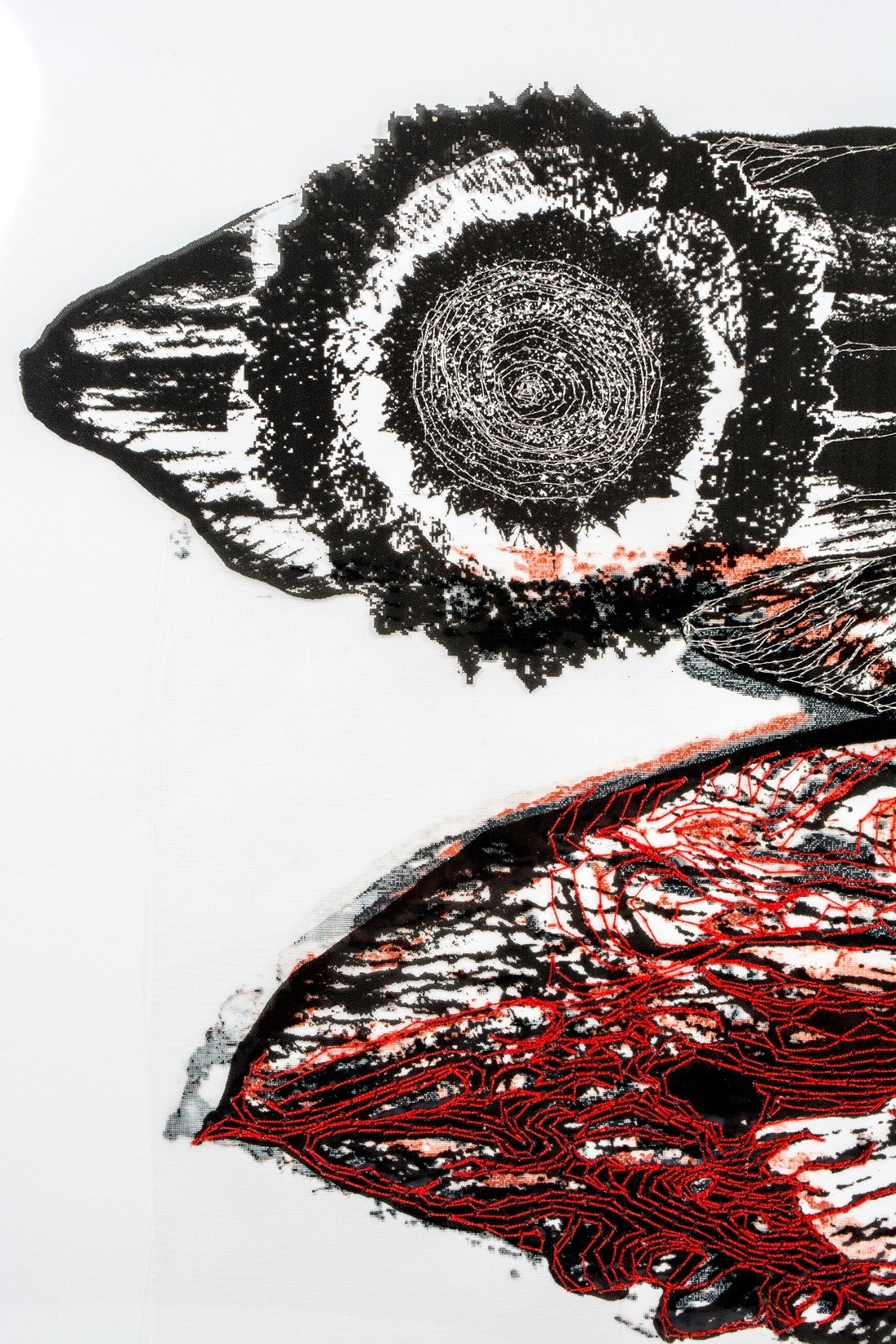
Tell us a bit about your chosen techniques and how you use them
I usually have different mediums such as oil pastel, graphite and Ecoline at my desk, as well as papers with different textures. I often use these mixed media directly on a photograph that was printed on paper.
I have also been experimenting with embossing using a small Xcut Xpress, and I love using it to explore mark making, shapes, forms, lines, and depth.
The Xcut Xpress is a lovely, useful and easy-to-use little manual press I discovered while searching for ways of increasing the textural and sculptural aspect of my work. I use it for exploring the making of certain marks and lines on surfaces like heavy papers, sometimes painting them in advance with water inks or oil pastels just to reveal or highlight certain areas or bits of texture.
In no way do I feel I have exhausted the mark making possibilities of this tool. I am very curious how it will work with different materials.
Lately I have been trying to deepen and explore the photo emulsion technique in screen printing. This technique has given me the possibility to explore in more detail certain contrasts and gradation of light and shadow in the photos. Exposure to light and the consequent discovery of the negative and positive can vary widely, and this variation can be very exciting and surprising.
I also like using water-based inks freely on the screen’s mesh as if it was a painting canvas and then manipulate the colours and the overlapping of textures on the mesh using different surfaces to print. For example, I use different papers and different textured fabric or silk organza when I want to create layers of transparencies.
Finally, the free-motion machine stitching technique has been a constant in my work. Again, I currently prefer using it in a different way by slowing the machine speed in order to obtain longer graphic lines.
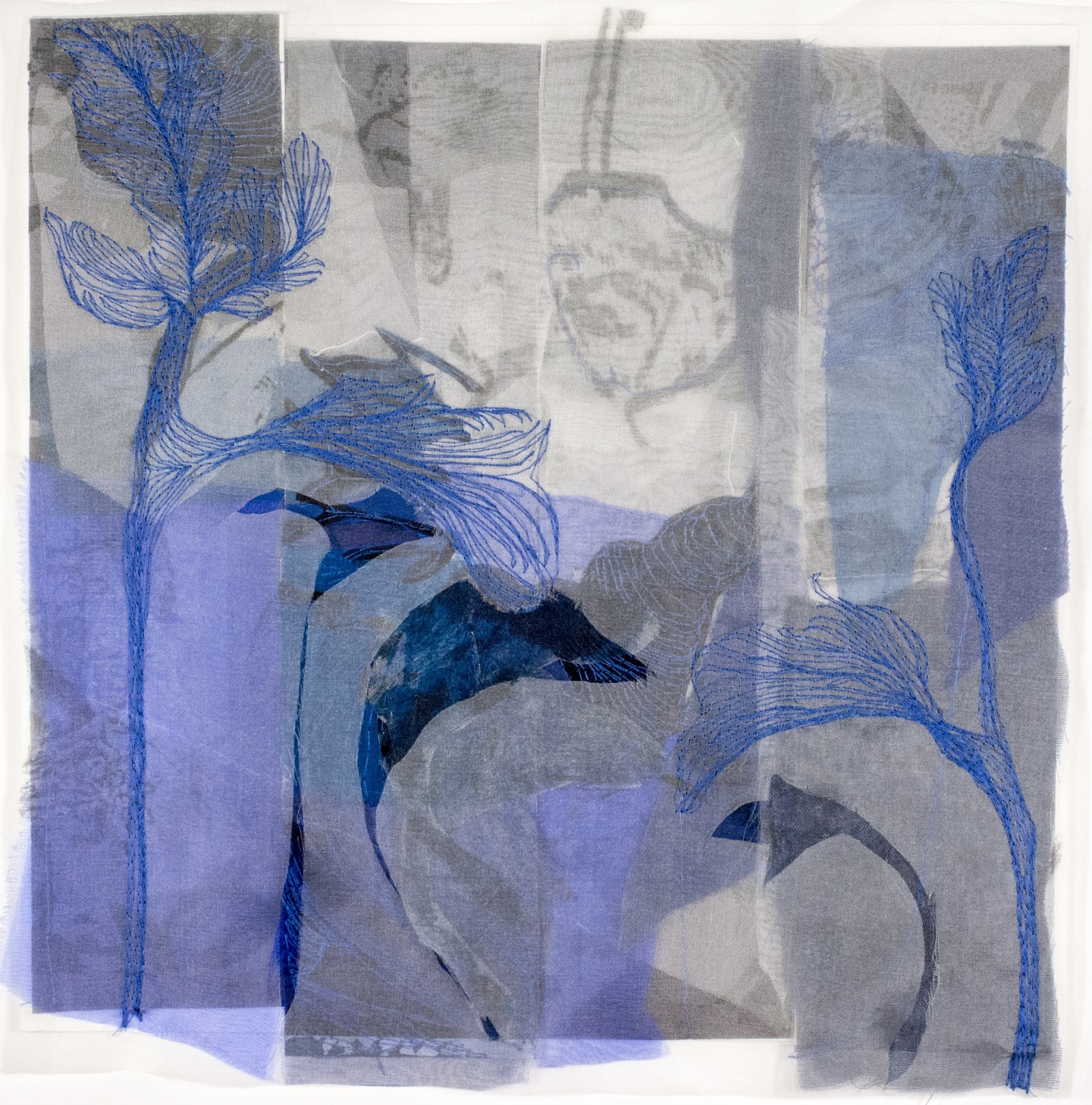
What currently inspires you?
Last year, I decided to purchase a cabinet with glass doors, so I could finally display a series of objects collected over the years on my travels that mainly belong to my Portuguese heritage. Emotionally, it has been very inspiring for me to be able to remember and study these objects, and I have focused my attention on photographing them and then manipulating those photos.
Most of these objects were given to me by my mother, who inherited them from my grandmother. They were allotted to me and to my two sisters over time, and they have different origins and symbolic values.
For some of them, I am attracted by their shape and texture. For others, I feel like they are calling me and making me remember my childhood. And for others, I just want to pass them on to my son in a different way than they were passed on to me.
They can be a carved wooden spoon from Alentejo, an area in Portugal, with a beautiful patterned texture and a very rich colour. Or a small brown carved box with metal sides that my mother filled with fragrant lavender seeds. Or a white and plain vessel that my grandmother used to light a candle and that still has wax remains from that time.
It has been very gratifying to be able to have these objects close to me, as I miss Portugal very much. I have not been back since I arrived in Canada.
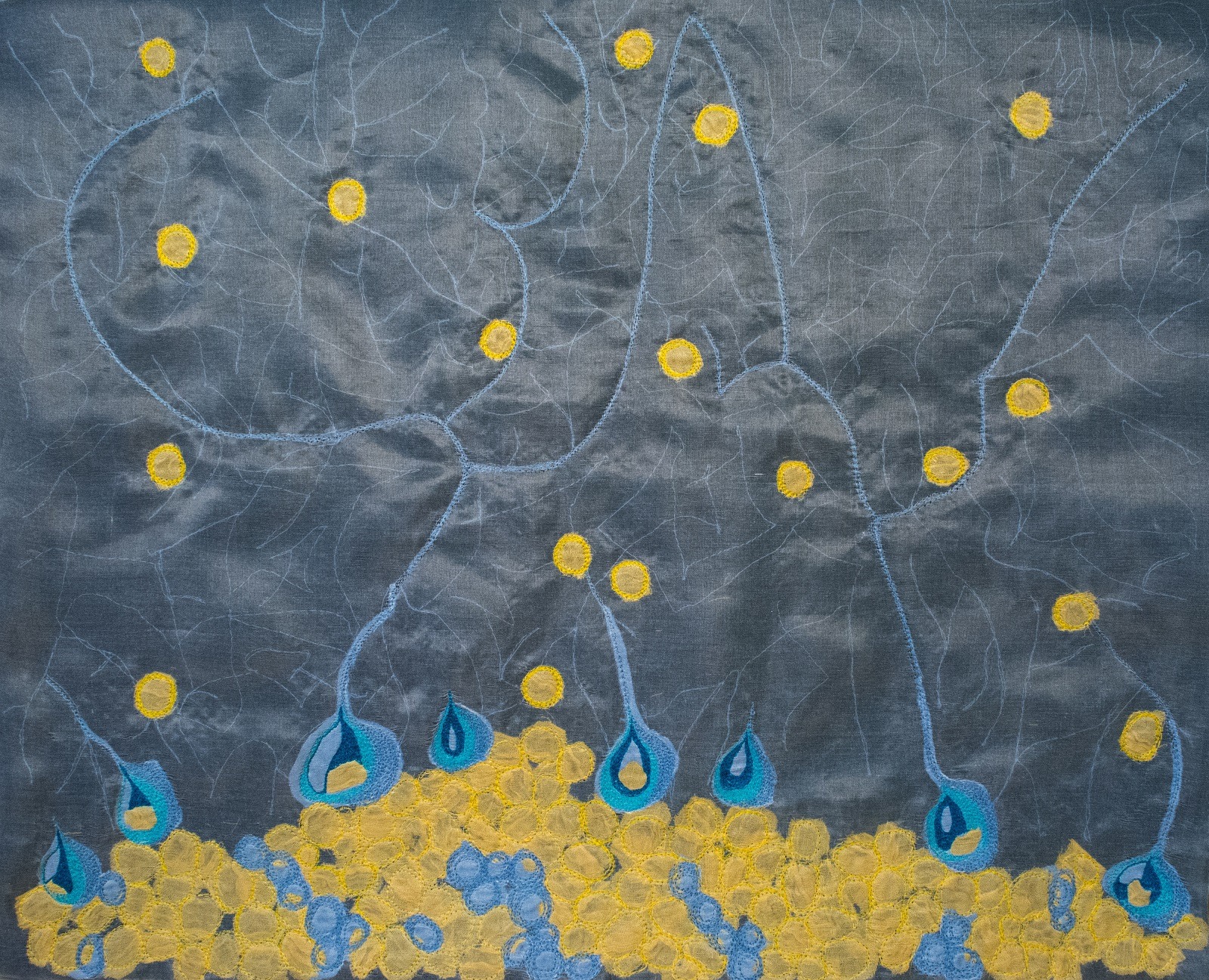
Wandering evolution
Tell us about a piece of your work that holds particularly fond memories and why?
I especially like to recall a work called ‘Purkinje cells’ created in 2016. It is a fabric study of a set of brain cells that was inspired by my attempt to research and deepen my knowledge of Bipolar disorder which exists in my family. I especially like the contrast of the colours and the way the background is layered using denim, silk organza and free-motion stitching. It was very emotionally rewarding to be able to draw freely with thread on top of the fabric using the free-motion technique.
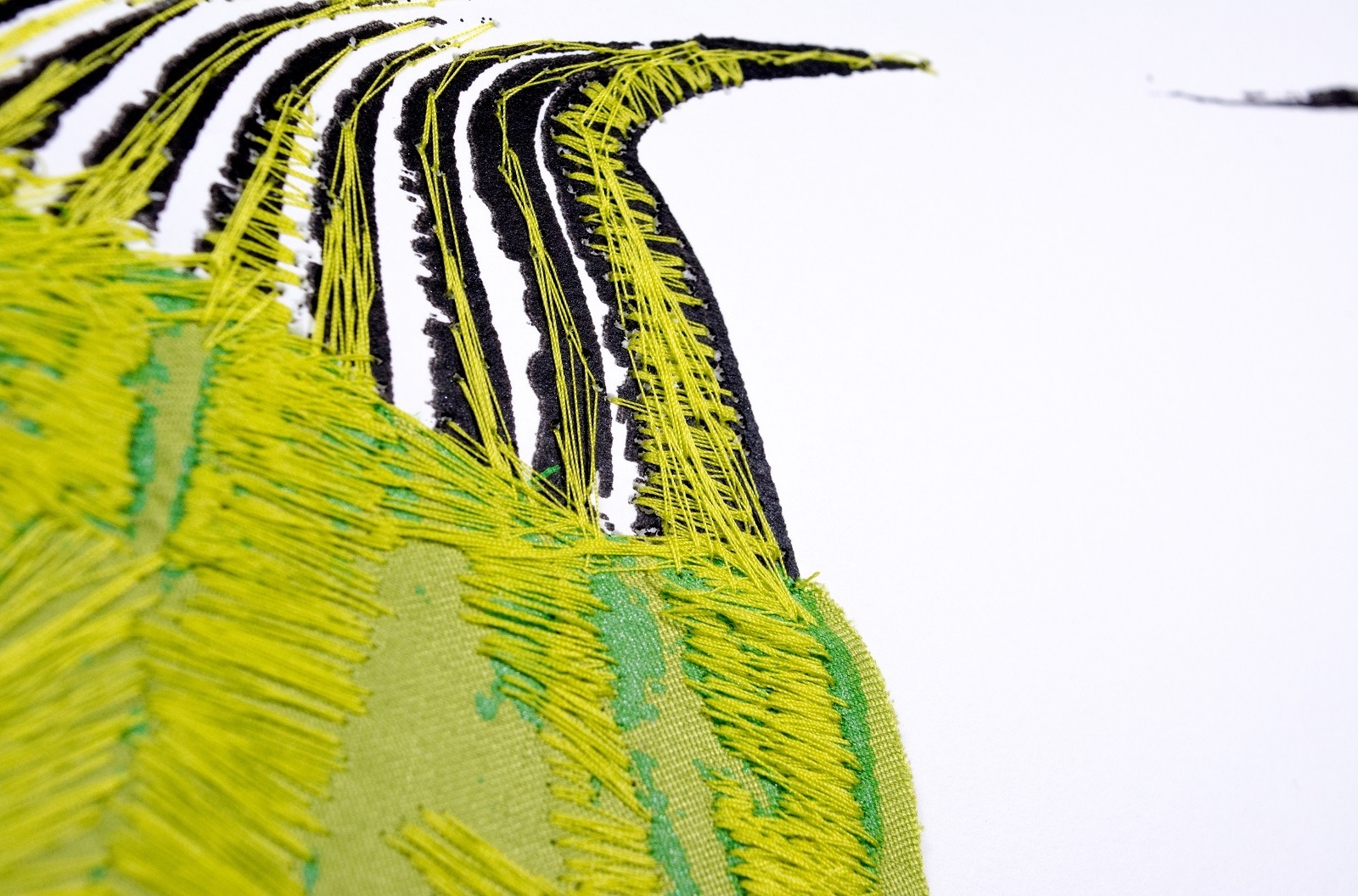
How has your work developed since you began and how do you see it evolving in the future?
My work is always evolving in a very wandering way. And at times, it may even seem to not be evolving or progressing! But I’m starting to understand its way and direction better and with less worry and anxiety.
In my early work, the use of fabrics was more intense and fundamental, and I was using the sewing machine with the traditional faster speed free motion technique. The overlapping layers of transparency in my first work reflected my urge to translate light, shadow and contrast into everything I created.
Over the years, I started to mix fabric with other surfaces, such as heavy paper, tracing paper, mesh and transparent film.
Using thread to draw lines and create texture and detail is something I’m still very interested in developing. I think the graphic and marked lines I like to create with thread while using the lowest speed of the sewing machine is something that will be constant in my future work as well.
Over this summer, I’m planning to expand my small at-home studio and have a dedicated area dedicated to developing and exploring the photo emulsion technique in the printmaking process. So, I am very excited and looking forward to the next few months in my life.
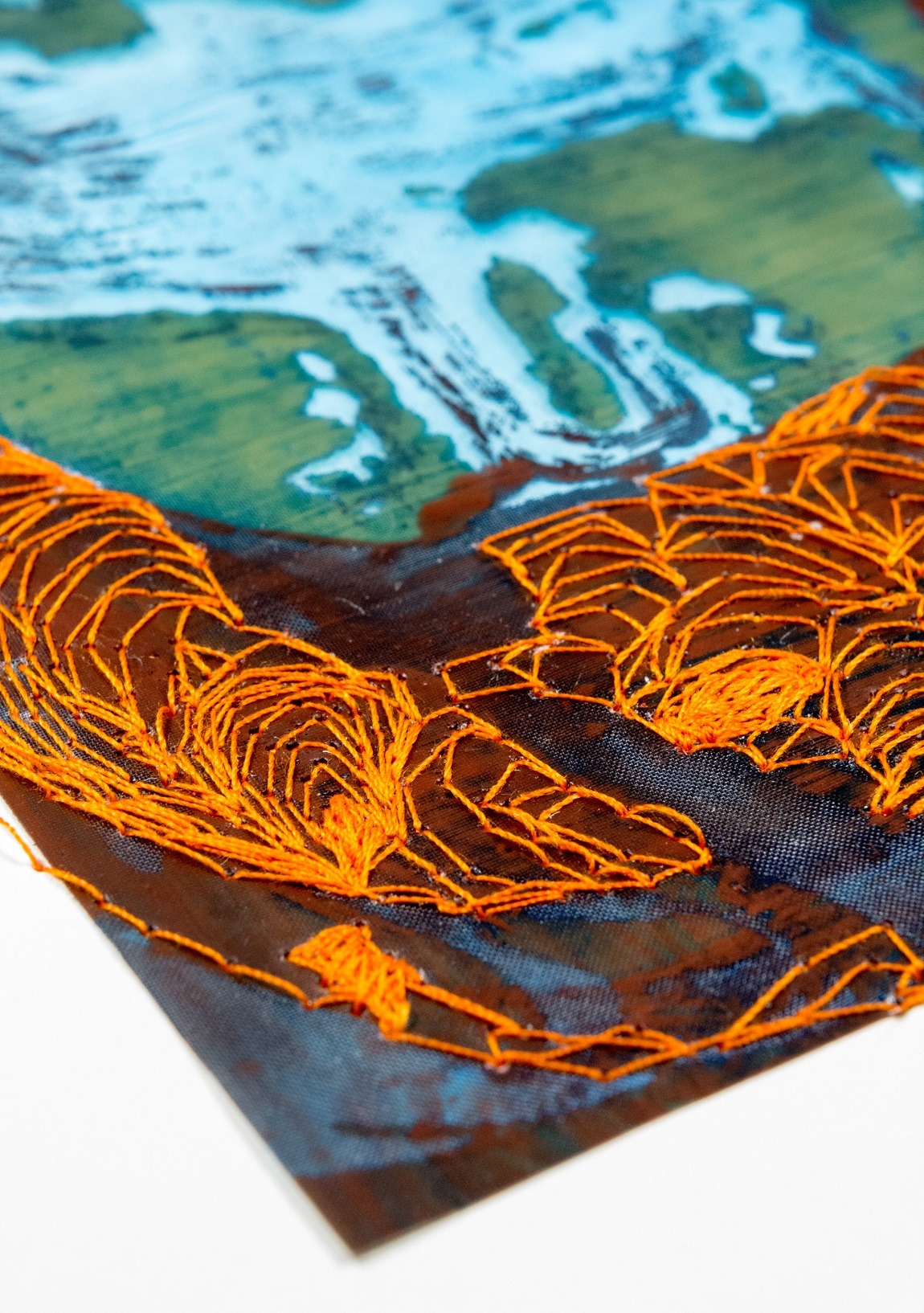
What advice would you give to an aspiring textile artist?
The word ‘textile’ can have a very broad and diverse meaning. For me, ‘textile’ means texture and lineation. And that is something constant and present in my work since the beginning.
So, I would suggest artists try to identify and foster certain repeated components and aspects of their work as a means to give it direction and consistency.
I also think artists should let their brains do all the wanderings they need without overthinking or overanalyzing what they feel and create. Because textiles can simply be translated by a thread, a surface or a texture (or a set of everything put together), we are the ones who ultimately know what they really represent.
For more information visit www.monicaleitaomota.com
Mónica blends a variety of techniques and materials in a single work of art. How might you do the same? Let us know below.
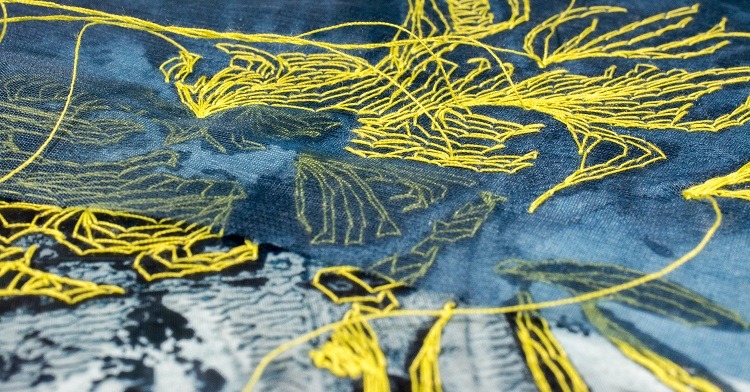

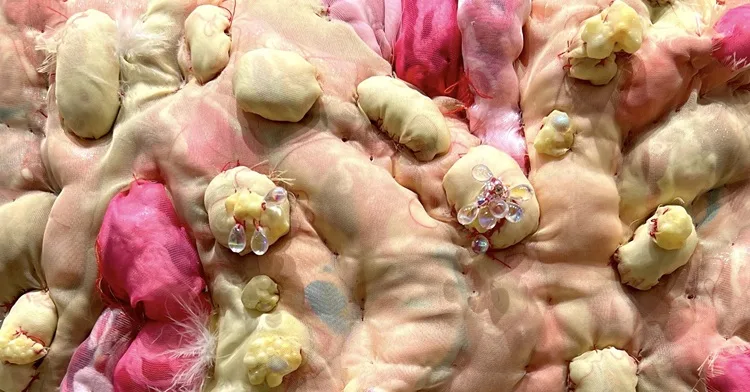
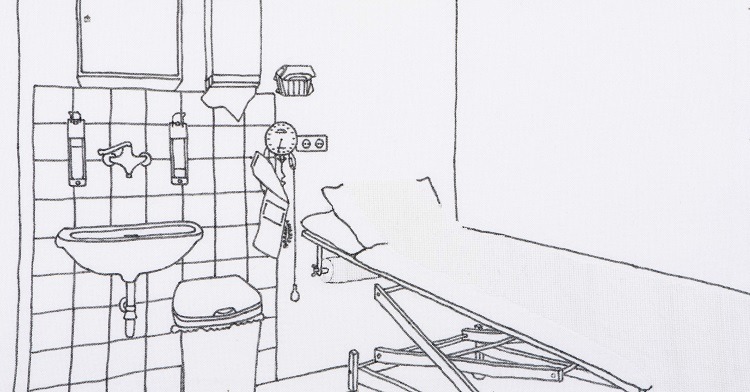
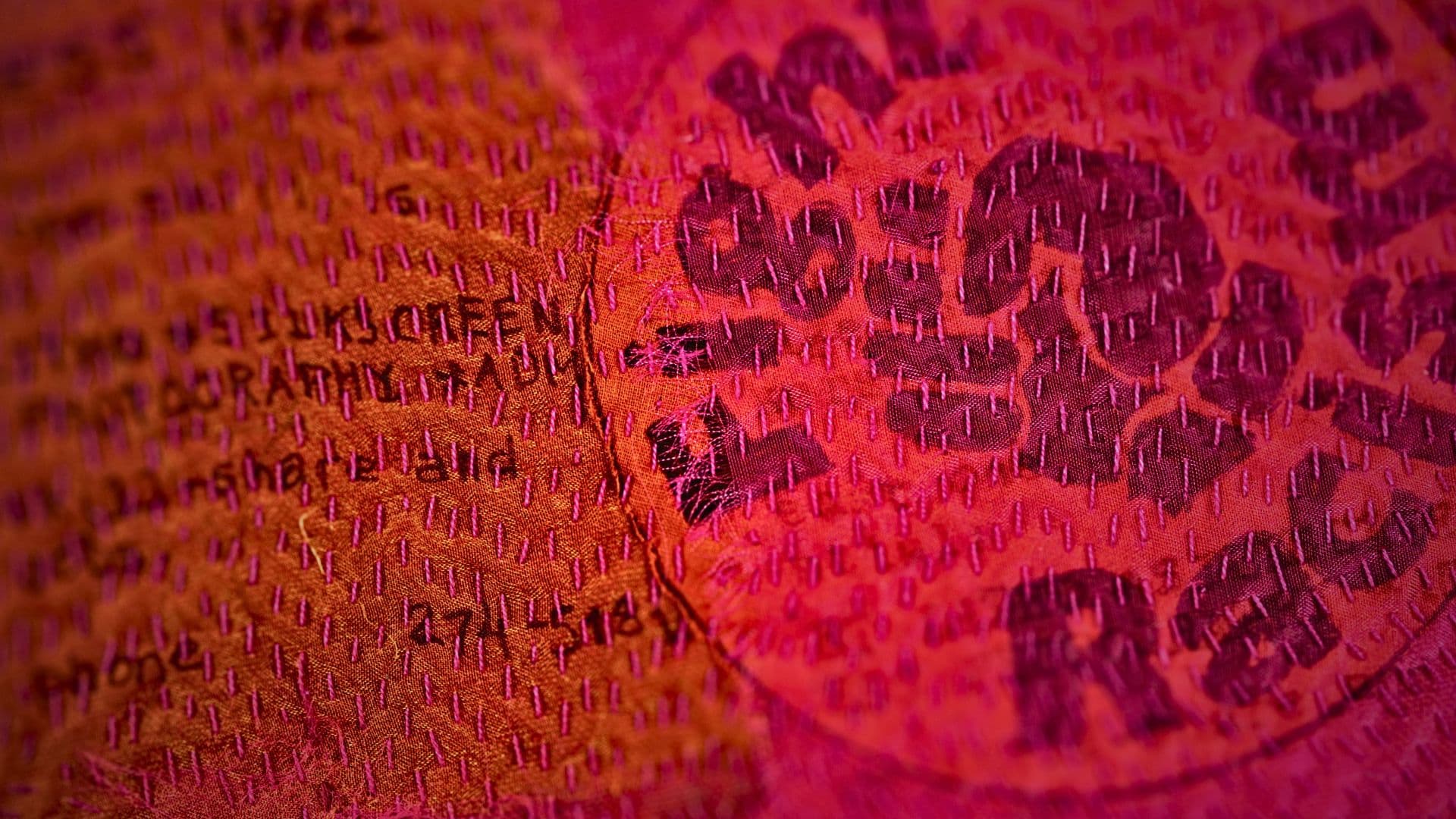

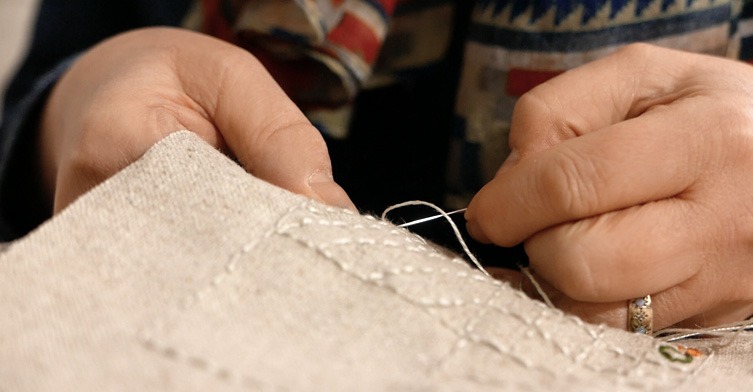
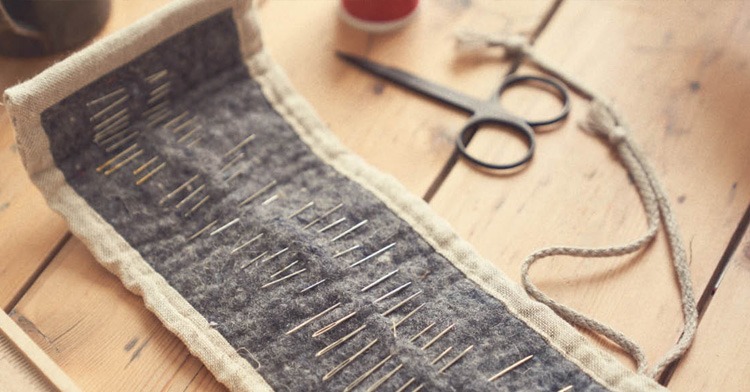
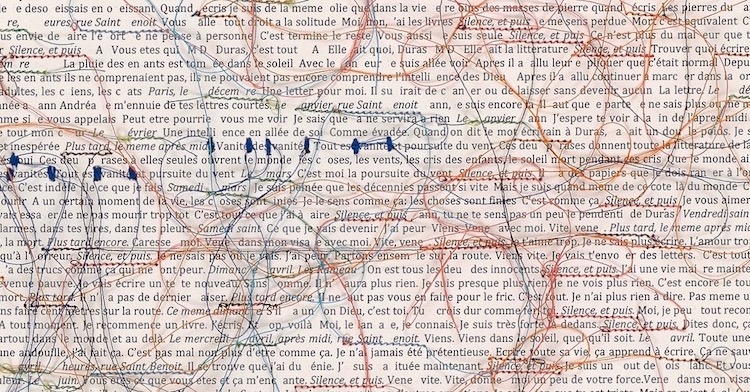
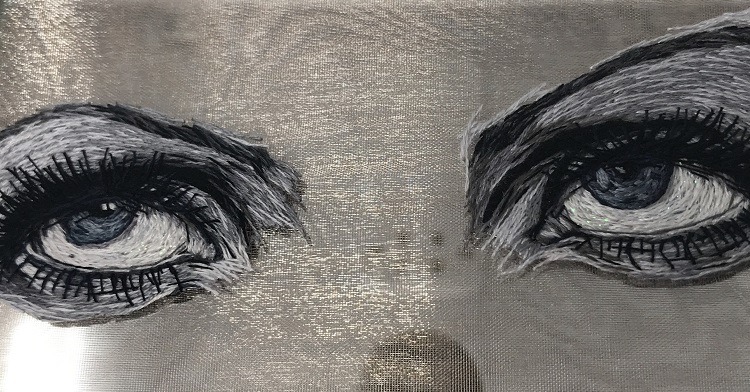
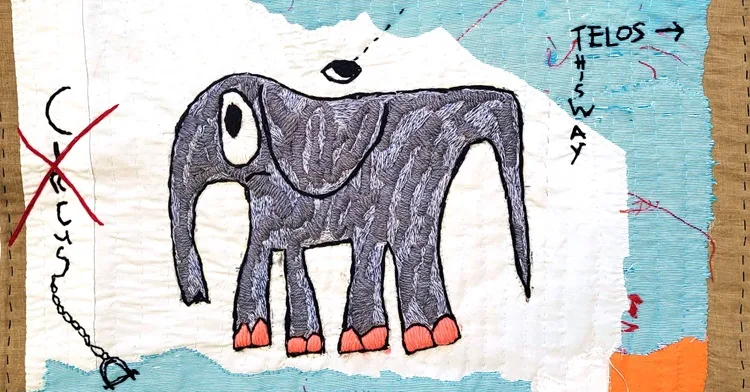
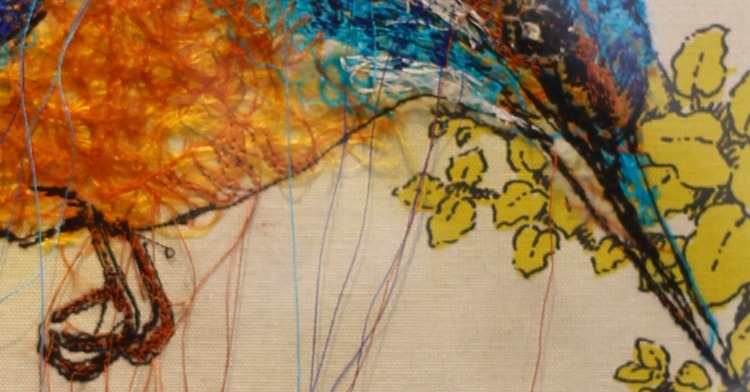
Comments